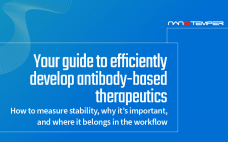When it comes to manufacturing biologics, managing host cell protein (HCP) levels is essential. A robust HCP strategy can help protect both your timeline and budget. Cytiva understands the challenges researchers face in HCP detection, quantification, and removal. We offer an end-to-end solution for HCP management, and our experts will work with you to find the right strategy tailored to your needs. To get started now, check out our knowledge center for expertise and advice on enhancing your HCP strategy.
Sponsored Content
Manufacturing Pluripotent Cell Therapeutics
Here we review strategies for gaining Food and Drug Administration (FDA) approval of allogeneic, pluripotent cell therapies. The crux of the discussion is that when developing a cell therapeutic, it is critical to look as much as a decade ahead to when FDA approval will be sought to commercialize the product through a biologics license application (BLA). While this discussion focuses on FDA approval of cell therapies, it is important to acknowledge the vast number of cell therapy clinical efforts…
Opto-Sensor Guided Centrifugation for Efficient, Reagent-Free Cell Separation in a Semi-Automated Closed System
This webcast features: Ben Josey, PhD, Field Applications Scientist, Corning Life Sciences The potential for cell-based immunotherapies is moving fast. But some of the processes to develop and manufacture these clinical-grade therapies can slow you down. This Ask the Expert webinar will cover ways you can reduce the manual steps involved in traditional cell processing. Attend to learn more about: Tips to streamline cell separation and formulation of specific cell populations for cell and gene therapy development and manufacturing Ways…
Innovations in the Manufacturing of Cell and Gene Therapies
Advancements in next-generation cell and gene therapies are fulfilling the promise of personalized medicine and attempting to cure and heal patients. Multiple approved products have been launched in global markets and the number of clinical trials continues to grow. Developing innovative advanced therapies is one of the biopharmaceutical industry’s greatest opportunities to dramatically improve patients’ lives. WuXi Advanced Therapies is a contract testing, development, and manufacturing organization (CTDMO) that has launched several innovative world-class platforms. It offers integrated platforms to…
De-Risking INDs with Unrivaled Monoclonality Assurance in Cell Line Development
This webcast features: Tanner Nevill, Vice President, Program Management, Berkeley Lights Monoclonality assurance is a central regulatory requirement for all cell lines manufacturing biologic therapies. Imaging is currently the gold standard for confirming that production cell lines originate from a single cell. However, conventional well plate imaging is very labor-intensive and prone to error due to the presence of “ghost” cells and debris that are difficult to differentiate from cells. Opto™ cell line development (CLD) on the Berkeley Lights Beacon® system provides…
How to Halve the Costs of Antibody Purification?
This webcast features:Â Romain Dabre, Senior Product Manager, Tosoh Bioscience Downstream processing is responsible for up to 80% of the entire production costs of biotherapeutics. Given the current drive to reduce manufacturing costs for biological therapeutics, streamlining downstream processing is necessary for chromatographers and process engineers. In this presentation, we showcase the benefits of using only two chromatography processes to purify monoclonal antibodies compared to the standard industrial process. Combining high-performance Protein A capturing and a single polishing step on salt-tolerant…
Your Guide to Efficiently Develop Antibody-Based Therapeutics
This eBook presents various techniques used to measure the stability of antibody-based biotherapeutics. The authors address the ins-and-outs of monoclonal antibody (MAb) formulation, cover Investigational New Drug (IND) and New Drug Application (NDA) filing timelines, and explain how storage conditions affect MAb stability. Monoclonal antibodies have been used in therapeutics for more than 30 years. Efforts to further develop and optimize better MAb-based biotherapeutics are increasing as they have become increasingly popular for the treatment and prevention of many diseases…
Best Practices for Ensuring High Virus Clearance When Using Anion Exchange Membrane Adsorbers
This webcast features: Sherri Dolan, Global Technology Consultant, Separations Marketing Group, Sartorius Stedim Biotech The risk of viral contamination is a concern for all biopharmaceuticals and vaccines derived from cell lines and can have serious implications. Contamination events can cost millions of dollars in investigation, clean-up, corrective action, and manufacturing plant downtime. Most importantly, such events pose a safety risk to the patient. To ensure the safety of biological products, regulatory agencies require manufacturing processes to have a validated current…
Configurable, Single-Use TFF Systems for Rapid Bioprocessing
This webcast features: David Serway, Global Director, Single-Use TFF Systems and ProConnex® Flow Paths, Repligen The explosive growth in biologics and gene therapies, the globalization of biomanufacturing, and the pressures to reduce capital investment and cost of goods while accelerating speed to market all point to changes in how bioprocessing systems/skids are designed, built, and operated. Future hardware, software, and consumables built on the principle of flexibility and extensive use of single-use, closed, complete, and ready-to-operate technologies will be described.…
Ultracentrifugation for Recombinant Adenoassociated Virus Therapies
Quantitation of different capsid species in viral-vector gene-delivery drugs, including recombinant adenoassociated virus (AAV) therapies, is essential for proper assessment of critical quality attributes before regulatory approval and during commercial production. If rAAV full-capsid percentages are maximized, and variants such as empty or partially-filled capsids are reduced as much as possible, then potency is increased for improved dosing and tolerance outcomes. Traditionally, characterization of AAV purity with respect to empty, full, and other variants has been performed by techniques such…










